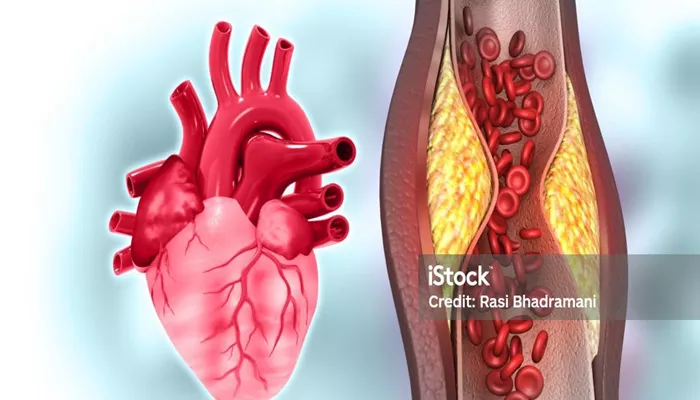Cholesterol, a waxy, fat-like substance found in every cell of the body, plays a crucial role in various physiological functions, including hormone production, vitamin D synthesis, and bile acid formation for digestion. However, an imbalance in cholesterol levels, particularly high levels of low-density lipoprotein (LDL) cholesterol, is a significant risk factor for cardiovascular diseases, including atherosclerosis—a condition where cholesterol deposits build up in the arteries, leading to their narrowing and hardening.
The management and reduction of cholesterol in the arteries are critical for maintaining cardiovascular health and preventing heart disease. This article will explore various strategies to address and manage cholesterol levels in the arteries, focusing on lifestyle changes, medical treatments, and emerging therapies.
The Role of Cholesterol in Artery Health
Cholesterol travels through the bloodstream in two primary forms: LDL and high-density lipoprotein (HDL). LDL cholesterol is often referred to as “bad” cholesterol because high levels can lead to the formation of plaque—a thick, hard deposit that can clog arteries and reduce blood flow. In contrast, HDL cholesterol is considered “good” because it helps remove LDL cholesterol from the bloodstream.
When LDL cholesterol accumulates in the arterial walls, it triggers an inflammatory response that attracts white blood cells.
These cells ingest the cholesterol and become foam cells, contributing to the formation of fatty streaks. Over time, these streaks develop into larger plaques, leading to atherosclerosis. This condition increases the risk of heart attacks, strokes, and other cardiovascular events.
see also: How Long Can You Live with A Biventricular Pacemaker?
Lifestyle Changes for Reducing Cholesterol Levels
Dietary Modifications
One of the most effective ways to manage cholesterol levels is through dietary changes. A heart-healthy diet can help lower LDL cholesterol and improve overall cardiovascular health. Key dietary recommendations include:
Reducing Saturated and Trans Fats: Saturated fats, found in red meat, full-fat dairy products, and certain oils, can raise LDL cholesterol levels. Trans fats, often present in processed foods, also contribute to unhealthy cholesterol levels.
Replacing these fats with unsaturated fats, such as those found in olive oil, avocados, and nuts, can help improve cholesterol profiles.
Increasing Fiber Intake: Soluble fiber, found in foods like oats, beans, lentils, apples, and carrots, can help lower LDL cholesterol levels by binding to cholesterol in the digestive tract and removing it from the body.
Incorporating Omega-3 Fatty Acids: Omega-3 fatty acids, present in fatty fish like salmon, mackerel, and sardines, have been shown to lower triglyceride levels and reduce the risk of cardiovascular disease.
Limiting Dietary Cholesterol: Although dietary cholesterol has a smaller impact on blood cholesterol levels compared to saturated and trans fats, it is still beneficial to limit intake of high-cholesterol foods such as eggs and shellfish.
Regular Physical Activity
Exercise is a cornerstone of cardiovascular health and can significantly impact cholesterol levels. Regular physical activity helps:
Increase HDL Cholesterol: Exercise boosts levels of HDL cholesterol, which helps remove LDL cholesterol from the bloodstream.
Lower LDL Cholesterol and Triglycerides: Engaging in moderate to vigorous exercise can help reduce LDL cholesterol and triglyceride levels, both of which are associated with an increased risk of heart disease.
Maintain a Healthy Weight: Physical activity aids in weight management, which can contribute to better cholesterol levels and overall cardiovascular health.
Recommended guidelines suggest at least 150 minutes of moderate-intensity aerobic exercise or 75 minutes of vigorous-intensity exercise per week, combined with muscle-strengthening activities on two or more days per week.
Smoking Cessation and Alcohol Moderation
Quit Smoking: Smoking damages the blood vessels and lowers HDL cholesterol, exacerbating the risk of cardiovascular disease. Quitting smoking can improve cholesterol levels and reduce the risk of heart disease.
Moderate Alcohol Consumption: Excessive alcohol intake can lead to high cholesterol levels and other health issues.
Limiting alcohol consumption to moderate levels—up to one drink per day for women and two drinks per day for men—can benefit heart health.
Medical Treatments for Cholesterol Management
In addition to lifestyle changes, medical treatments may be necessary for individuals with high cholesterol levels or those at risk of cardiovascular disease. Commonly prescribed treatments include:
Statins
Statins are the most widely used class of medications for lowering LDL cholesterol. They work by inhibiting the enzyme HMG-CoA reductase, which is involved in cholesterol production in the liver. Statins effectively reduce LDL cholesterol levels and have been shown to decrease the risk of heart attacks, strokes, and other cardiovascular events.
Common statins include atorvastatin, simvastatin, and rosuvastatin. While generally well-tolerated, statins can have side effects, including muscle pain, liver enzyme abnormalities, and gastrointestinal symptoms.
Ezetimibe
Ezetimibe is a medication that works by reducing the absorption of cholesterol from the diet. It is often used in combination with statins to further lower LDL cholesterol levels. Ezetimibe can be particularly beneficial for individuals who are unable to achieve target cholesterol levels with statins alone.
PCSK9 Inhibitors
PCSK9 inhibitors are a newer class of cholesterol-lowering medications that work by enhancing the liver’s ability to remove LDL cholesterol from the bloodstream. These medications, such as alirocumab and evolocumab, are typically used for individuals with familial hypercholesterolemia or those who have not achieved sufficient cholesterol reduction with other therapies.
Bile Acid Sequestrants
Bile acid sequestrants, such as cholestyramine and colestipol, bind to bile acids in the intestine, preventing their reabsorption and promoting the excretion of cholesterol. This leads to a reduction in LDL cholesterol levels. These medications are often used in combination with other cholesterol-lowering drugs.
Niacin
Niacin, also known as vitamin B3, can help increase HDL cholesterol levels and lower triglycerides. However, it is less commonly used due to potential side effects, including flushing, itching, and liver toxicity at high doses.
Conclusion
While lifestyle changes, including dietary modifications, regular exercise, and smoking cessation, play a crucial role in managing cholesterol levels, medical treatments and emerging therapies offer additional options for those with high cholesterol or at increased risk of cardiovascular events. By adopting a comprehensive approach that combines lifestyle interventions with medical therapies, individuals can effectively manage cholesterol levels and improve their overall heart health.

